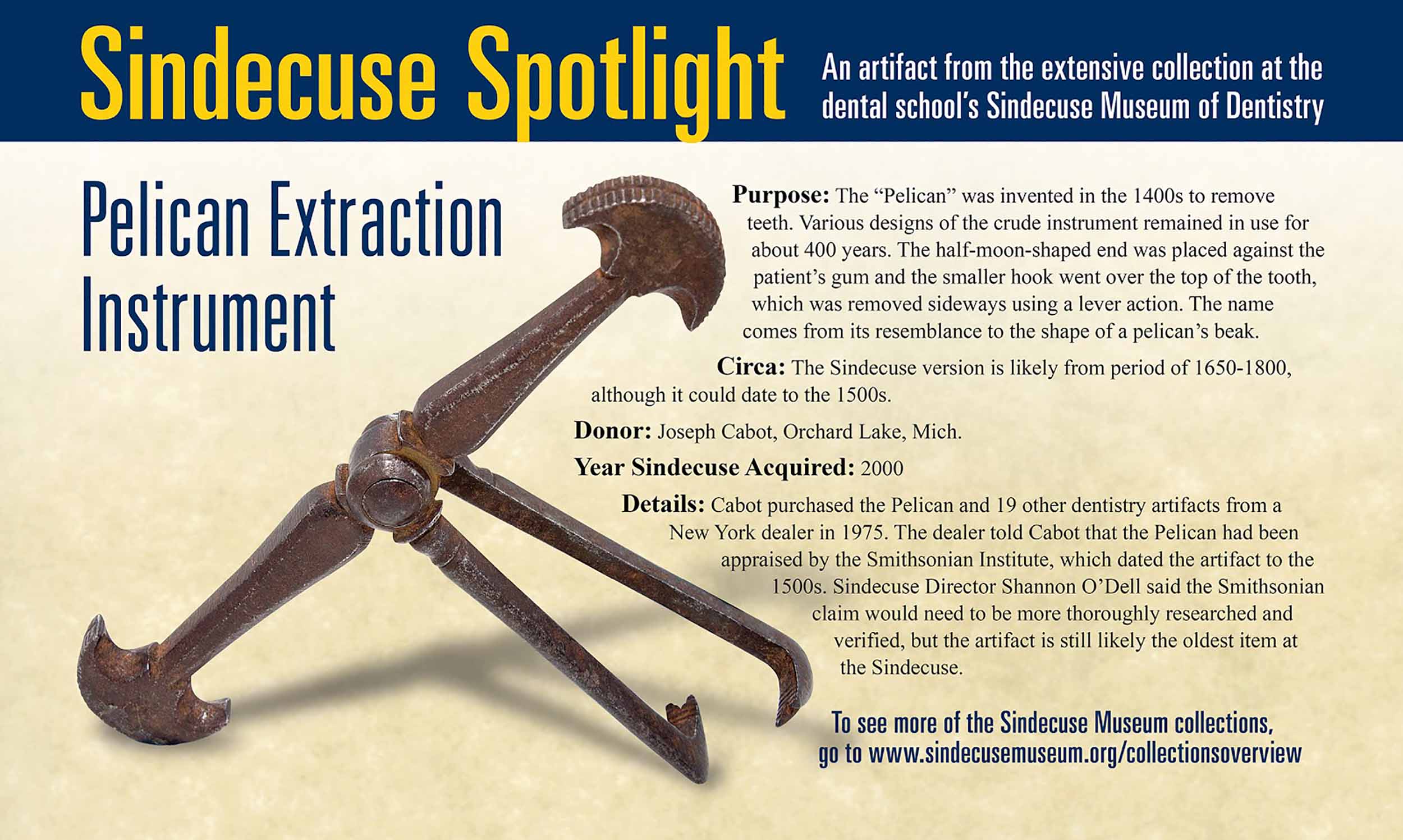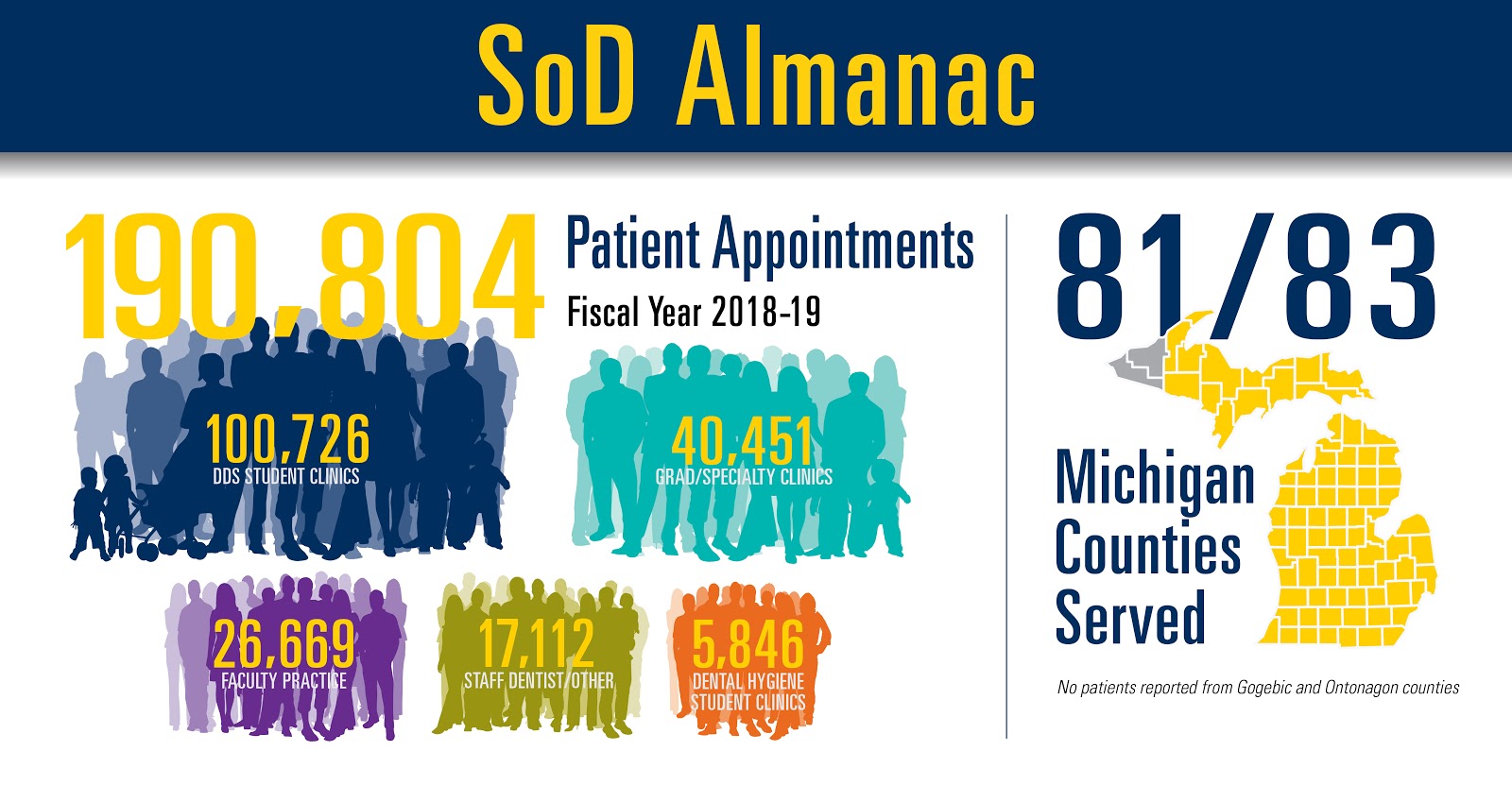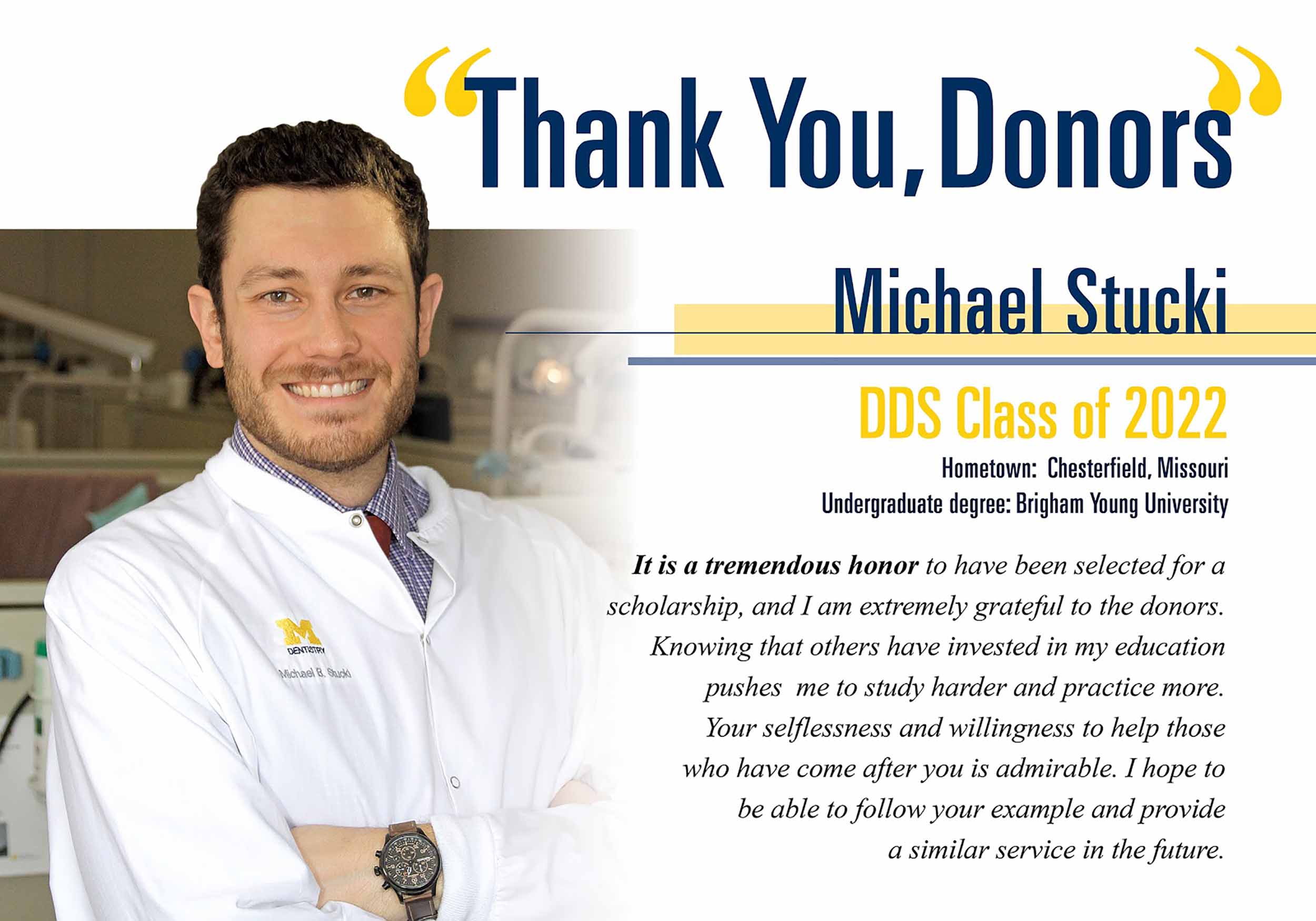Faculty Profile: Dr. Stephen Sterlitz, Clinical Assistant Professor in the Department of Cariology, Restorative Sciences & Endodontics
It’s only about 30 miles from Redford, Michigan, where Dr. Steve Sterlitz grew up, to Ann Arbor, where he earned his DDS degree at the University of Michigan School of Dentistry and is now a member of the faculty. It might at first sound like the fairly common story of someone who decides to become a dentist, heads off to the state university for their education and stays around to join the faculty.
But Sterlitz’s story is not the way most people become a dentist and a faculty member. His adventurous career path involved traveling the world with the U.S. Navy for more than 20 years before and after earning his dental degree from U-M. He joined the dental school faculty in 2017 after retiring as a Navy dentist and educator.

Stephen Sterlitz
Today, as he navigates the halls of the dental school, his clinical assistant professor role is a blend of 60 percent teaching, 20 percent research and 20 percent faculty practice. He teaches in several areas, from the basic foundational clinic, where students use typodonts and practice drilling on plastic teeth, to the more advanced graduate restorative courses. He is co-course director for the second-year crown and bridge course and also co-course director for the third-year advanced operative course. Last year, Dean Laurie McCauley asked Sterlitz, who has a background in computer-assisted dentistry, to co-chair a schoolwide Vision 2024 committee that is examining how digital computing and other technological advances are changing dentistry and, thus, dental education. What will those changes require of students, faculty and staff in terms of training and curriculum? What new equipment and software should be purchased and implemented into the curriculum during the school’s current major renovation and beyond?
The critical importance of the committee’s charge plus his faculty duties make for a busy schedule for Sterlitz, but this is someone with a history of managing a fast pace and challenging assignments. Academic dentistry may not seem as stressful when you’ve been through Surface Warfare Officer School and completed the training for Diesel Engineering Officer of the Watch. Then there were his three and a half years as an officer aboard the USS Comstock, a dock landing ship with deployments to Somalia and the Arabian Gulf, followed by two years stationed in Canada as a missile training officer for the Canadian military. That was all before he decided to become a dentist.
The story of how Sterlitz eventually discovered dentistry while in the Navy starts in Redford. Coming out of high school, Sterlitz was an excellent student who excelled in math and science. To the extent that he ever thought about a career at that point, he mused about medicine. He was also a three-sport athlete (football, basketball and track-and-field) and colleges began recruiting him as a football player. When the U.S. Naval Academy offered him a chance to play NCAA Division I football, he accepted the appointment to Annapolis and seemed headed for a career in the Navy.
Since big-time football takes a considerable amount of mental and physical energy, Sterlitz says he went from being an honor student in high school to an average student at the Academy. He saw limited action in Navy football games as a defensive lineman during his four years from 1988-1992, but he has one cherished claim to fame: He recovered a fumble during an Army-Navy game, one of the most iconic annual traditions for college football and the military academies.
After graduating from the Annapolis in 1992, Sterlitz began fulfilling the five-year minimum commitment of service to the Navy. It eventually stretched to more than six years as he completed various schools and assignments, including his time aboard the Comstock. At some point he realized that being a Surface Warfare Officer wasn’t what he wanted to do with his life. He began to consider leaving the Navy for a switch into business or management, but then a friend told him about the Armed Forces Health Professions Scholarship, which pays for medical or dental school, among other options. As he had done in high school briefly, he began thinking about medicine, then added dentistry to his options because he knew a dental officer from one of the ships he had served on. Ultimately, he decided: “If I’m going to stay in the Navy, I’m going to be a dentist.”
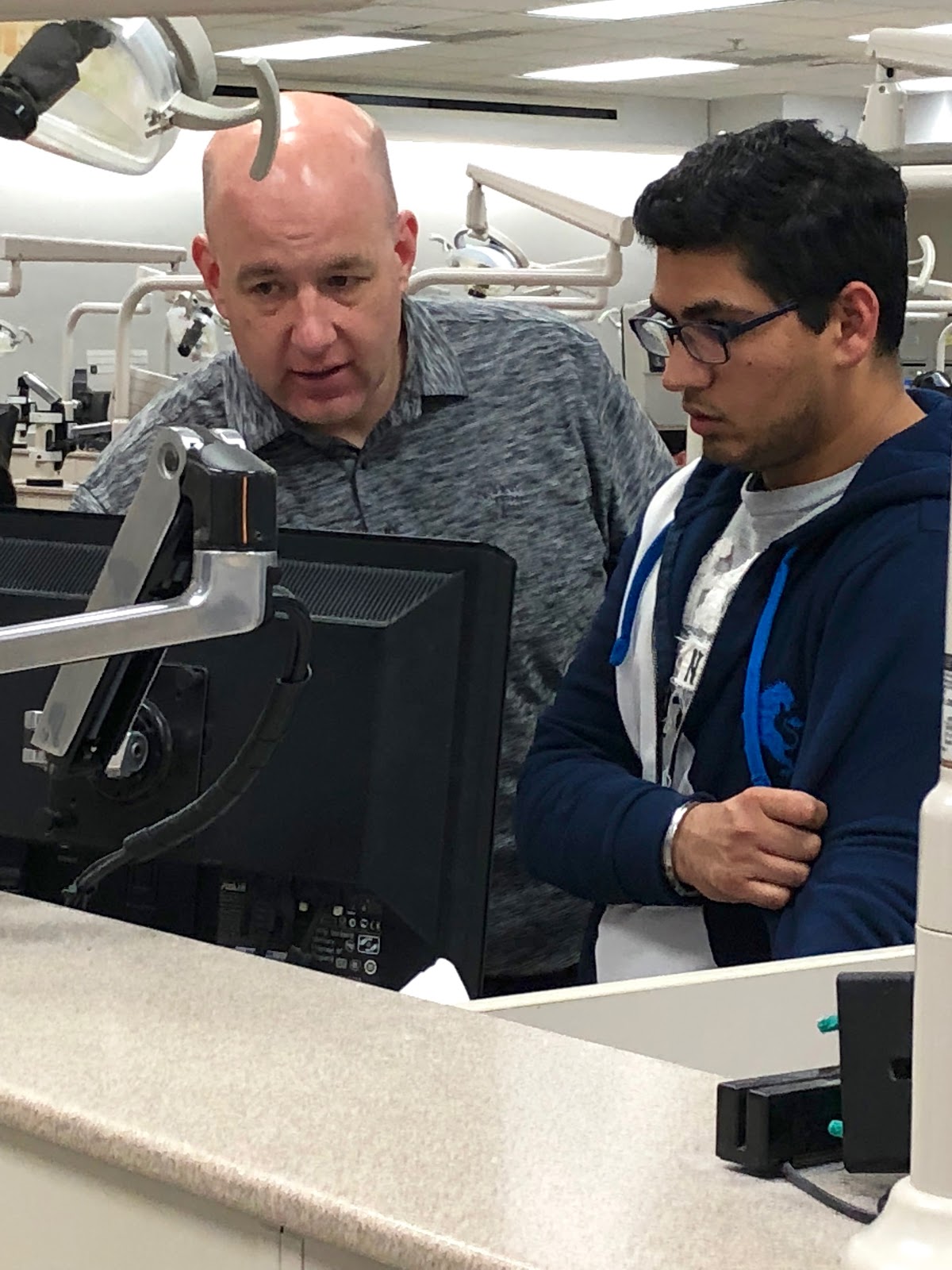
During an informal conference with DDS student Sagar Chadha, Steve Sterlitz discusses an exercise using dental computer-aided-design to reinforce key principles of dental anatomy.
Sterlitz needed to bolster his science credentials to get into dental school, so he resigned from active duty and enrolled for a year, from 1998-99, at Eastern Michigan University. He took biochemistry, anatomy, physiology and other pre-dentistry courses. He remained in the Navy Reserves as he navigated the study year and the next four at the School of Dentistry. It was a difficult new routine, but Sterlitz was motivated to tackle the challenge because he is a self-professed lifelong learner who loves education and because a dental degree would lead him into a fresh new aspect of the Navy.
He credits several faculty members for leaving an impression about how to interact with students, treat patients and perform research. “The person I used to watch walking around and treating patients was Dr. Jeff Shotwell – how he treated the students, encouraged them to think, and how he interacted with the patients. I thought that’s what you want a healthcare provider to be,” Sterlitz recalls. He also admired the teaching abilities of Dr. Wayne Walcott and the research expertise of Dr. Dennis Fasbinder. “When you see someone who is really good at what they do, and they’re able to inspire you to do more, you don’t want to let them down.” It’s a lesson he carries today as a faculty member.
After Sterlitz graduated from the School of Dentistry in 2003, he completed a two-year Advanced Education in General Dentistry (AEGD) program as a resident at the Naval Postgraduate Dental School in Bethesda, Md. He concurrently earned a master’s degree in Oral Health Science from George Washington University in Washington, D.C. When Sterlitz returned to active duty as a Navy dentist, his first assignment was a military exchange program in which he was the only American on a Royal Navy base in Portsmouth, England, for two years. He then traveled halfway around the world to Guam, where he spent two years as a dentist on the USS Frank Cable, a submarine tender.
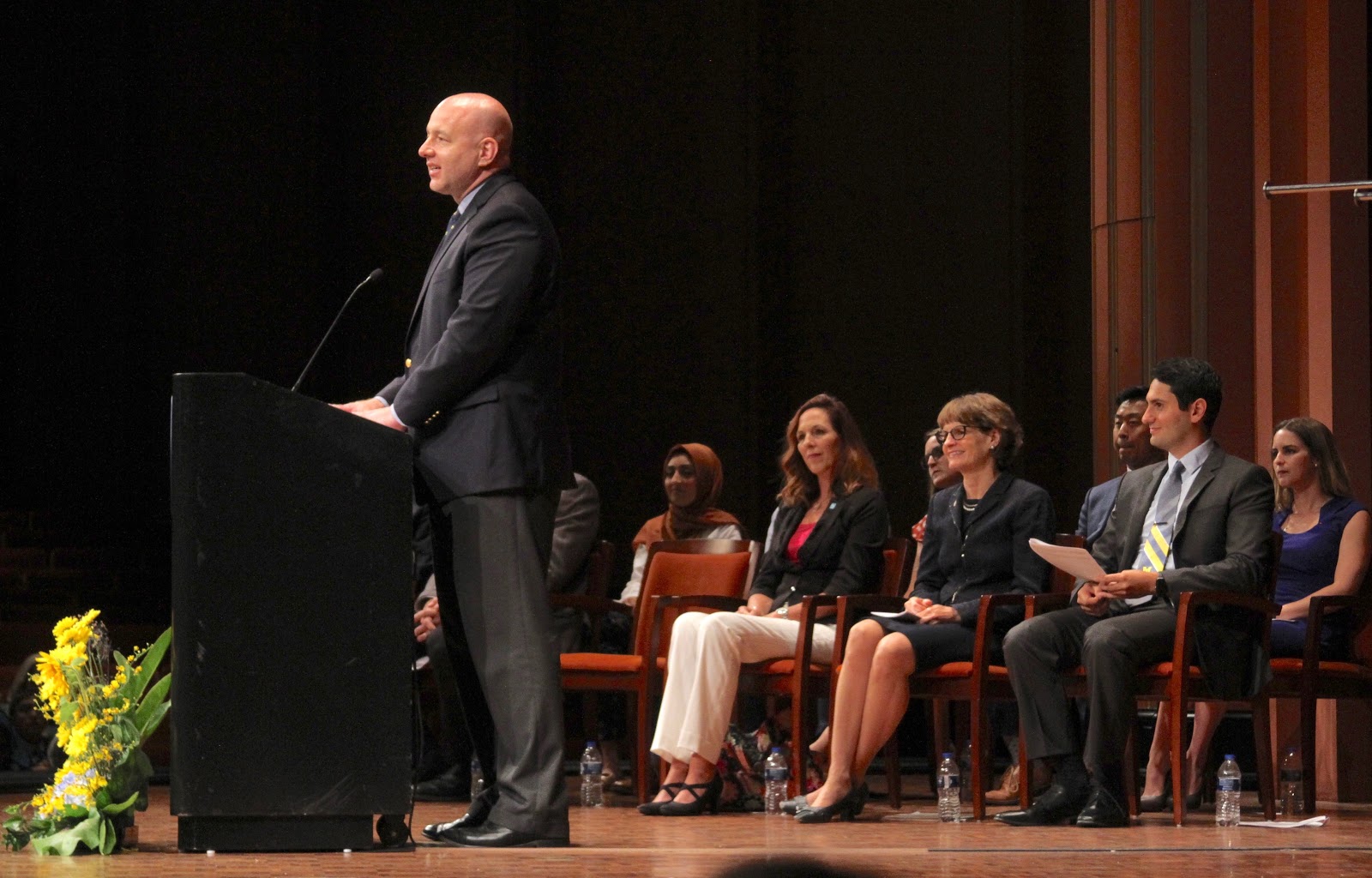
Steve Sterlitz was the faculty speaker at the 2018 White Coat Ceremony. “There are no shortcuts to being a well-rounded, educated clinician,” he told the incoming Class of 2022. “You are at the No. 1 dental school in the world, you have access to the top scholars in their fields, and you have a once-in-a-lifetime opportunity to learn from dental pioneers.”
In 2010, Sterlitz returned to the homefront, as Program Director of the AEGD program at the Navy Medical Center in San Diego, Calif. After three years there, he was appointed Dental Clinic Director in charge of providing and supervising dental treatment for U.S. Marines stationed at Camp Pendleton, 60 miles north of San Diego. A year and a half later, he returned to the San Diego medical center as a dentist and instructor for the Advanced Dental Assistant Program. As he finished two years on that job, he had logged the requisite 20 years to consider retirement from the military.
If he stayed in the Navy, one of his options was to become a commanding officer of a dental battalion. “I just didn’t want to lay awake at night on weekends wondering what a 19-year-old did that I would have to answer for. So that didn’t appeal to me much,” he says. Another option was to go back and teach at the Naval Postgraduate Dental School in Bethesda, but that was mostly about clinical care and he had developed an appreciation for research during and after dental school. As he tried to decide what would align with what he wanted to do the rest of his career, he realized an academic position would be a good fit because he could practice, teach and keep learning as a researcher. And there were family considerations as well for securing a dental school faculty position. Sterlitz and his wife Beckie have four sons who range in age from middle school to college, so the always-on-the-move culture of the Navy had become less attractive over time.
As Sterlitz looks back over the dentistry part of his Navy career, he appreciates the experience for many reasons but he highlights a couple in particular. He always preferred general dentistry, rather than a specialty, because he wants to be versatile and able to handle most anything he encounters. The Navy emphasis on general dentistry is practical, as he learned during his AEGD program. “The goal of that training was to prepare a ‘super-dentist’ who could go to a remote duty station, like a ship in the middle of the ocean, and handle just about anything that comes in – trauma, endo, oral surgery,” Sterlitz said. “That appealed to me. I really liked the element of being able to do a little bit of everything in general dentistry. I didn’t want to just specialize in one field.”
Another advantage of his Navy dentistry experience is that the service is an early adopter of new technology, materials and techniques. Whenever Sterlitz was reassigned to a new location, he would quickly investigate its technology and equipment, learn the processes, test them out and add them to his skillset. When he returned to the States from Guam in 2010, he encountered several pieces of CAD-CAM equipment for the first time. Short for Computer-Aided Design and Computer-Aided Manufacturing, the equipment has evolved incredibly in the last decade. Today digital technology can provide highly-detailed imaging of a patient’s mouth to help the dentist precisely place implants, make digital impressions on 3-D printers, create temporary or permanent crowns in hours rather than days, and a multitude of other better and faster tasks. Sterlitz embraced the CAD-CAM world and began researching how to leverage digital dental technology in education and patient care. He created courses about it and made presentations around the country. “I recognized both the value it brings to the dental practice and the way it can revolutionize the way we treat patients. I dived in with both feet and never looked back.”
At some of the conferences where technology was on the agenda, Sterlitz reconnected several times with dental school faculty member Dennis Fasbinder, who talked about how the dental school was integrating more technology and researching the outcomes. It was a niche that Sterlitz wants to contribute to. “I’d been aware of what is going on here and I had some pretty influential instructors who made me think that I’d like to come back and give back,” Sterlitz said. He applied for a faculty position, was offered the job and started in 2017. Although he decided to end his military career, he calls accepting the appointment to Annapolis and staying in the Navy for 20 years “one of the best decisions I ever made.”
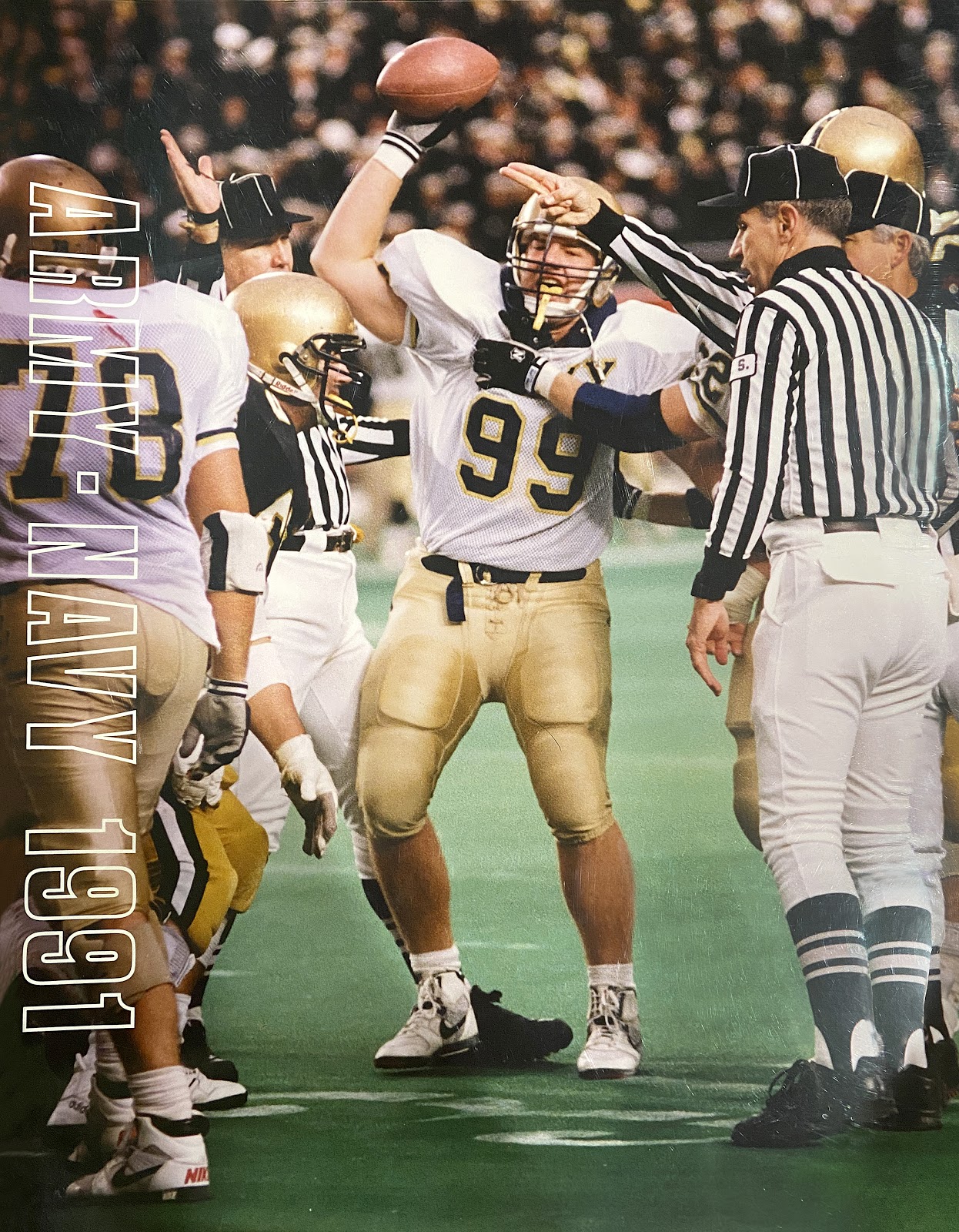
This poster shows Steve Sterlitz recovering a fumble in the 1991 Army-Navy game.
Three years into his faculty job at U-M, he is immersed in the school’s traditional coursework and clinic instruction just as faculty have been for decades. Yet it is also a transition point as digital dentistry and other new technology transform the profession and the education of dentists. “The challenge is how can you get innovative with digital technology to improve treatment and treatment outcomes,” Sterlitz said. “That’s what brought me here. That’s what I want to do, that’s my passion, to figure out: Is dentistry ready for an evolution of how we practice? I think digital dentistry can open that doorway.”
“We’re now at this point where it is not asking, should we? But: when will we? Initially, the advances in technology weren’t that predictable or efficient, but now they are, and that’s allowing us to raise the level of care. Dental technology doesn’t change dentistry, it allows us to do dentistry in a different way. As the times change, so does the practice.”
The technology committee that Sterlitz is co-chairing with fellow faculty member Dr. Gustavo Mendonça is still mostly gathering information from fellow faculty, administrators, students, curriculum directors and technology companies. It has made some recommendations to school leadership and more will follow, but Sterlitz emphasizes the approach is to go smart rather than go fast. “Any suggestion the committee makes needs to be well-founded in research, either bench-top or clinical,” he said. “We’re not going to advocate flash-in-the-pan new methods or say, ‘Hey, this looks fancy, let’s go do this.’ It needs to have a very good reason why you want to teach this, because we have a very proud tradition here of teaching very sound principles of fundamental dentistry. We can’t just flippantly disregard tradition and history.”
In his daily dealings with students, Sterlitz thinks about the faculty members who impressed him when he was at the dental school. He also draws on the lofty ideals of the military, which emphasize the necessity of service to something greater than yourself. “It is really those moments with the students when the light bulb goes off, the ah-ha moment, where they say they now understand why we are doing that. When the student makes that connection, you know you are making a difference. And if you can make that connection, you can make a big impact on the profession because 109 (graduating) students each year go out and affect thousands of patients a year. That’s the multiplier I’m working toward.”
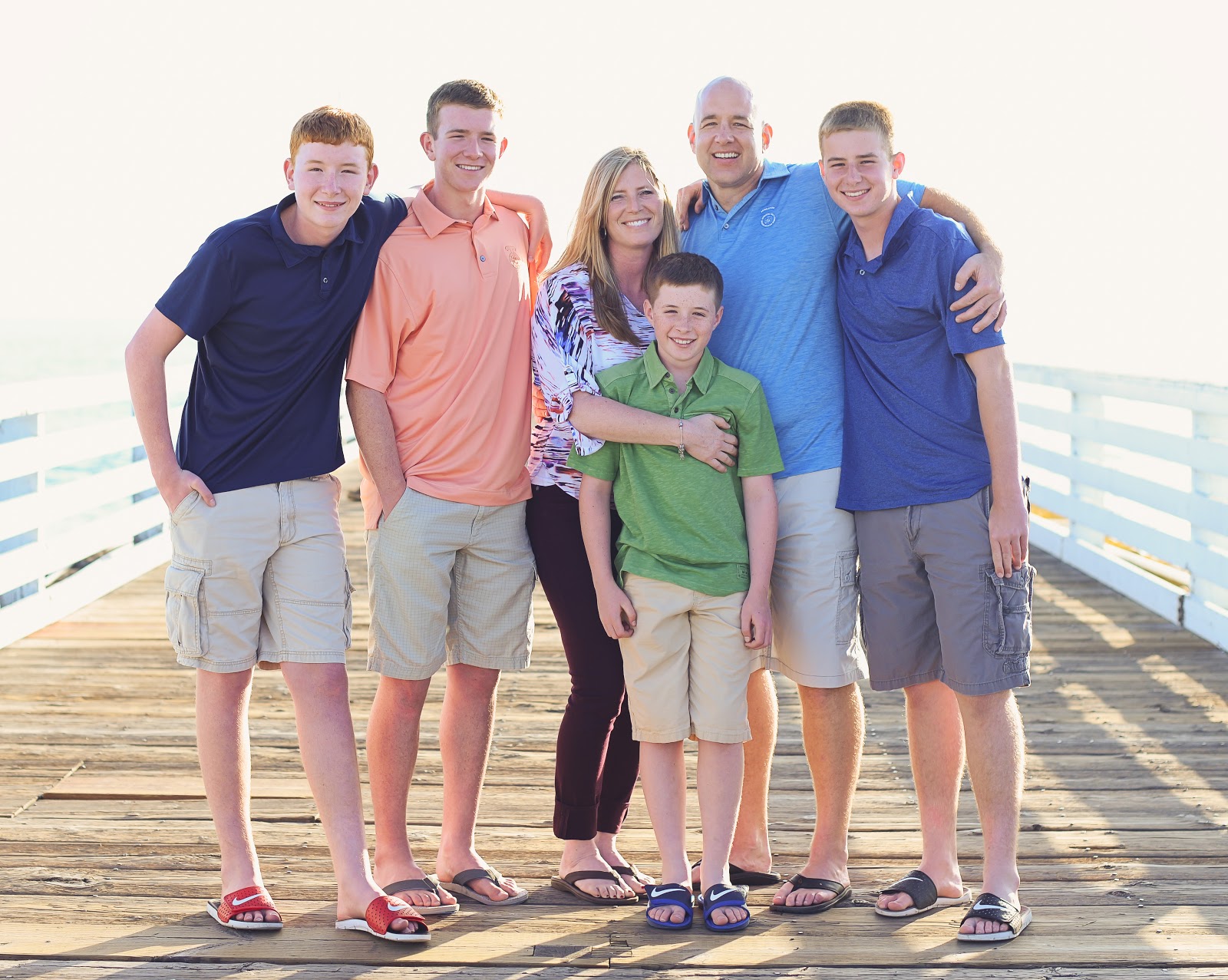
Steve and Beckie Sterlitz with sons (from left) Sam, Stephen Jr., Gabriel and Mitchell.

